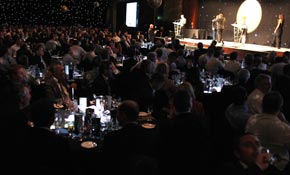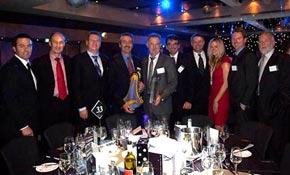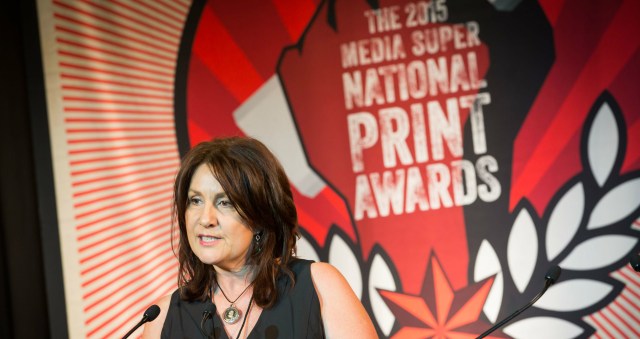
Andy Vels Jensen: On my way to the NPA tonight, a client asked me “Andy, is your name still Rock Bottom?”
My answer was “I’ve been Rock Bottom for so long I think I have developed gills”.
Our world and industry has changed dramatically over the past 10 years but the challenges have not. My first NPA was 10 years ago and at the time I recounted an incident where my teenage daughter over dinner complained about everything and my 12-year-old son made the comment “Lighten up sis, of course the world sucks, otherwise we would all fall off”.
Granted, the natural disasters have gotten worse, we went through a GFC and our industry, well, sucks more than usual, but we don’t face new challenges as such. The problem we have is that the challenges are now banging, not knocking, on the front door and it’s no longer a question of “if one should change” but “how fast can you change”.
In other words, the idea of re-inventing yourself and adjusting to the new world around you is no different than it was 10 years ago. The ancient Greeks said “there is no success without hardship” and I guess in there is the answer; it will hurt but you have no choice but to change if you want to be successful.
If you don’t implement change, your future will be a very unhealthy one. A future where your customers will be paying you too little and you will be paying your employees too much.
65% of Fortune 100 companies today have some sort of iPad pilot or deployment program in place for their business.
Like them, you need a plan, backed by technology, which allows you to open up new growth opportunities that will help you to turn customers and employees into being fans of your company.
So, where is the industry at? How bad is it?
I believe a conversation Groucho Marx had at a dinner party says it all. Let’s assume for a moment that Groucho is the print buyer and the pretty lady is a printer.
Groucho asks “Madam, would you sleep with me for $50 million?”
The pretty lady laughingly responds “Well of course!”
Groucho asks “How about $10?”
Pretty lady quips “Mr Marx, what do you take me for?”
To which Groucho responds “Madam we have already established what you are. At this time we are simply haggling over price!”
Yes, print comes cheap these days and according to industry surveys, prices continue to fall and costs continue to go up. Makes you wonder “will things get better”?
Well, the industry has already improved. According to official ABS stats industry sales in 2010 are down 1%, but industry profits are up 34% compared to 2009. Given 2009 that was not exactly a flash year this would indicate that it’s actually more than good news. It’s great news.
So, whoever among you tonight improved profits, you must have made the required changes in your business and you are now reaping the benefits of quick action. If you did nothing and if 2010 was worse than 2009, you are in for a hairy ride in 2011 as you will be up against some cost effective and smart thinking operators and aggressive competitors.
But, although late, it’s never too late. The print industry can learn from other industries which have undergone radical change.
Butchers come to mind. They are no longer the white apron clad people who cut up dead animals, store them in a cold room, only needing to know how thick you want your steaks. Butchers will today offer various marinated versions and cuts of meat.
They try to sell you everything else that accompanies a good meal at much higher prices than what larger outlets charge. They offer home catering and BBQs, working alongside other suppliers from whom they get a share of the profits.
They cook up their own products on Saturdays and offer it to the public, asking for feedback to determine what customers like and dislike, before putting the product up for sale. They are no longer simply butcher shops, rather they are “suppliers of fine quality foods” and, if you will, “complete solution providers who offer a value proposition”.
Not unlike a print business, the butcher had to respond to change, different consumer buying habits and tougher competition. The core expertise of the butcher, however, remains the quality of the product and the quality of the people employed. Without it customer loyalty walks out the door. No different from our industry.
So, what is the future for our industry?
Has print production dropped due to the recent economic crisis and falling readerships or was the decline triggered by smart phones, tablet computers and more advertising dollars heading to the internet? Or is it a combination of everything?
In reality, we will only know when we get back to a “new normal” and we are not there yet. This “new normal”, for traditional commercial offset print at least, will be 70-80% of pre-GFC levels.
However, revenue does not necessarily make for a successful business. We have seen plenty of cases where a reduction in sales was just what the printer needed as it ended up improving their bottom line.
Profitability though is only achieved if you accept reality and adjust to the role of printed products in a market that is more complex than ever before, while also grasping the new opportunities change offers.
Will the market continue to consolidate? We believe so.
By 2015, we believe 80% of the A1 sheets produced in NZ will come from the production sites of four groups! This will make NZ one of the most consolidated markets in the world.
The UK industry went from 14,000 printers to now being less than 4,000; with 62 million consumers to feed and plenty of export opportunities close by.
ANZ has 25% less sheetfed printers, limited export opportunities and the support of 60% fewer consumers. That stat alone will tell you that “we are not there yet”.
Have we improved as an industry over the past year? One would have thought so given what we have gone through and the mistakes of the past.
However, unfortunately, blundering ignorance is being lifted to levels of Olympic proportions! Equipment deals are closed one week, only for next week to bring the surprising news that the same company that invested has gone into liquidation. Printers take on a 20,000 run job on open account with a smile, without knowing the buyer and without any upfront payment. The printer could even be doing the order on equipment not suited for the job and at an unknown cost but hey, it keeps them busy and “nobody else gets the work”!
How many industries do you know of where someone will take a perfectly good commodity (paper) with an open market value, personalize it with a specific print job, thereby making the paper almost obsolete to anyone else but the print buyer, without first asking for some money upfront?
No other industry.
It’s the stuff that makes banks run for the hills. Banks want to understand what it is we are attempting to achieve as an industry, but a few companies continue to make this effort an uphill battle.
My recommendation is that you don’t allow yourself to be dragged down to such levels of incompetence in your business. You can’t win. Someone out there will always beat you with solid experience!
It’s like walking into a Sexyland Megastore demanding political asylum!
At Drupa 2000, it was proclaimed by many that by 2010 offset would be overtaken by inkjet and toner based digital print. Today digital printing accounts for less than 15% of overall production whilst offset is responsible for over 60%.
Which is the fastest growing? Digital, obviously.
It’s a new improving technology in which printers have an opportunity to invest fairly easily and which allows for an early competitive advantage. However once everyone gets in, will digital print simply be another commercial offset case with a downward spiral in price?
If you can’t fix your existing offset business, what makes you think adding digital will fix your business? The problem is bigger than that. Hype often gets in the way of a clear view of the facts.
The only fact I know is that of a recent Danish study:
25% of all married men will kiss their wife goodbye when they leave the house in the morning, but… 90% of these same men will kiss the house goodbye if the wife leaves!
A more serious industry study in Western Europe shows that in 2008 jobs with runs of less than 2000 sheets was 12% of total print revenue produced.
This number shot up to 36% in the space of 12 months! And 75% of this short run work was colour.
Meaning, if you want a stat that is not hype, it’s that before 2015 short run colour will grow into being the most dominant work within commercial sheetfed print as well as being the most profitable work… until you entertain a dinner conversation with Groucho!
Do we need to be worried? Yes, but only if we decide to become depressed, are unwilling to face up to reality and decide to work against change.
Heidelberg will continue to invest in ANZ and we will do whatever it takes to support this industry, just as our customers continue to support Heidelberg. Personally, I remain optimistic about the future of print in ANZ.
Even more so after having viewed the entrants for this year’s Heidelberg Award. The judges picked a worthy winner with a history of producing great print and quality. The winner of this year’s Heidelberg Award is a company that managed to put onto paper what can be achieved in print if you have imagination and know how to combine excellent people skills with the power of technology…
Offset Alpine!
Comment below to have your say on this story.
If you have a news story or tip-off, get in touch at editorial@sprinter.com.au.
Sign up to the Sprinter newsletter



